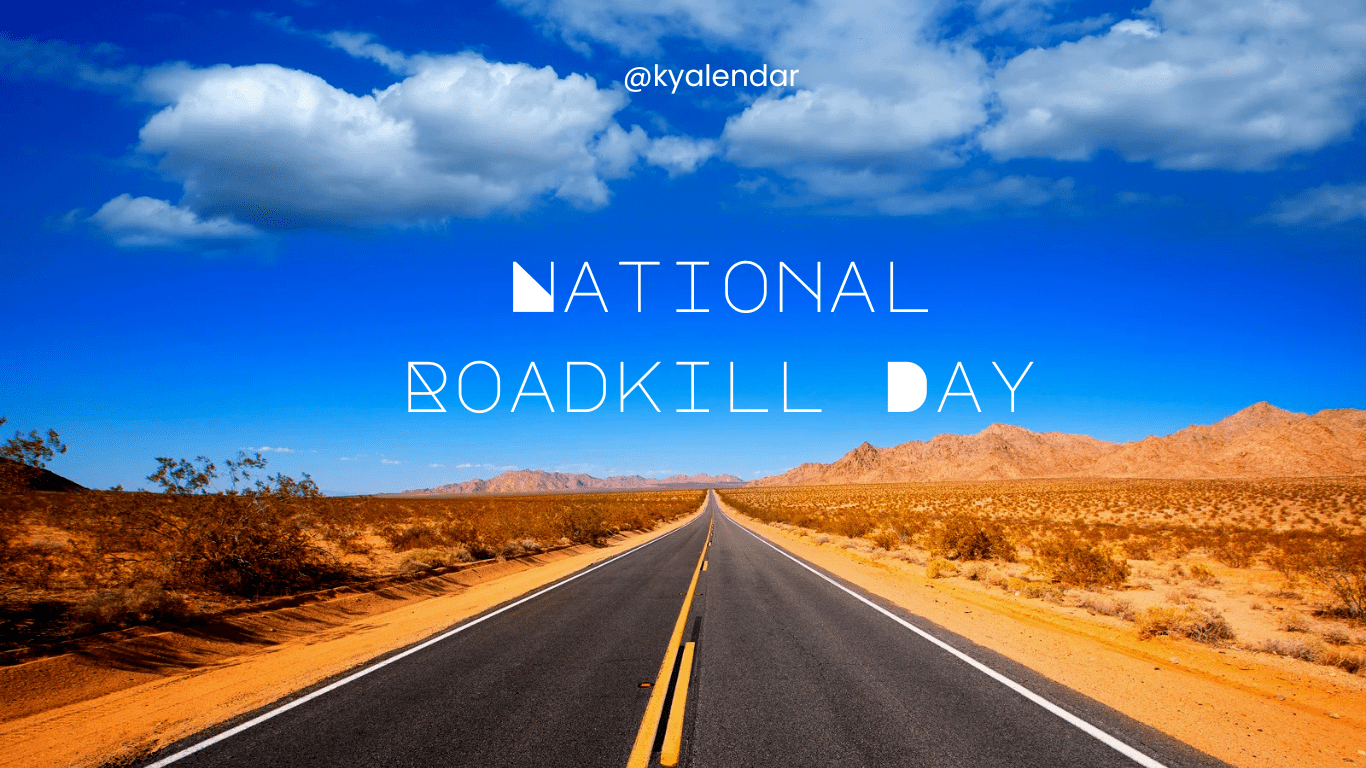
- This event has passed.
National Roadkill Day
September 25

National Roadkill Day is observed annually on September 25th, and it serves as a day to raise awareness about the often-overlooked issue of wildlife fatalities on our roads. While the topic may seem unconventional, the day aims to highlight the impact of road traffic on wildlife and encourage efforts to prevent such incidents.
The Purpose of National Roadkill Day
National Roadkill Day was established to draw attention to the numerous animals that are killed on roads each year and to foster discussions about wildlife conservation and road safety. It is a reminder of the sometimes dire consequences of human activity on wildlife and the environment.
Understanding the Issue
Each year, thousands of animals fall victim to road traffic accidents. This includes a wide range of species, from small mammals and reptiles to larger animals like deer and bears. The consequences are significant, not only for the animals themselves but also for ecosystems and human safety.
- Wildlife Impact: Roadkill can have severe effects on local wildlife populations. The loss of individuals, especially in smaller or endangered species, can disrupt breeding patterns and affect the balance of local ecosystems.
- Ecological Consequences: The death of wildlife on roads can lead to imbalances in predator-prey relationships and affect the health of the ecosystem. For example, the reduction of certain species can have cascading effects on other species and the environment.
- Human Safety: Collisions with wildlife can pose serious risks to drivers and passengers. Large animals, in particular, can cause significant damage to vehicles and lead to accidents resulting in injury or even fatalities.
Activities and Observances on National Roadkill Day
National Roadkill Day is marked by various activities designed to increase awareness and promote action:
- Awareness Campaigns: Educational campaigns are conducted to inform the public about the impact of roadkill and the steps that can be taken to reduce it. This might include posters, social media posts, and community events.
- Roadkill Reporting: Some communities encourage the reporting of roadkill to local wildlife authorities or conservation groups. This data can help in understanding patterns and identifying areas where wildlife crossings may be needed.
- Wildlife Crossings: Efforts are often made to highlight the need for wildlife crossings, such as overpasses and underpasses, which can help animals safely cross roads and reduce the likelihood of roadkill.
- Community Clean-ups: Volunteers may organise clean-up events to remove roadkill from highways and roads. This helps to prevent further accidents and reduces the potential spread of disease.
- Educational Workshops: Workshops and seminars might be held to educate drivers about how to avoid collisions with wildlife. Topics may include driving techniques, such as slowing down in known wildlife areas and being vigilant for animals on or near the road.
Promoting Wildlife Conservation
National Roadkill Day is also an opportunity to promote broader wildlife conservation efforts. This includes:
- Supporting Conservation Groups: Encouraging support for organisations dedicated to wildlife protection and habitat preservation. Donations and volunteer work can help these groups continue their vital work.
- Advocating for Policy Changes: Advocating for policies that incorporate wildlife considerations into road planning and infrastructure development. This can include measures like installing wildlife fences and creating safe crossing points.
- Community Involvement: Engaging local communities in conservation efforts and road safety initiatives. Public involvement can help create more effective solutions and increase awareness.
Looking to the Future
As awareness of National Roadkill Day grows, there is potential for increased action and innovation in addressing the issue. Future observances may focus on:
- Technological Solutions: Exploring new technologies, such as wildlife detection systems and vehicle-mounted sensors, to prevent accidents involving wildlife.
- Enhanced Infrastructure: Developing more advanced infrastructure solutions, like wildlife corridors and crossings, to mitigate the impact of roads on wildlife.
- Global Collaboration: Sharing knowledge and strategies across borders to address roadkill on a global scale. Collaborating with international organisations and governments can help in developing effective solutions.
Conclusion
National Roadkill Day serves as an important reminder of the impact that road traffic can have on wildlife and ecosystems. By raising awareness, promoting preventive measures, and supporting conservation efforts, we can work towards reducing roadkill and protecting wildlife. This day encourages us to reflect on our interactions with the natural world and to consider how we can contribute to a safer and more harmonious coexistence with wildlife.